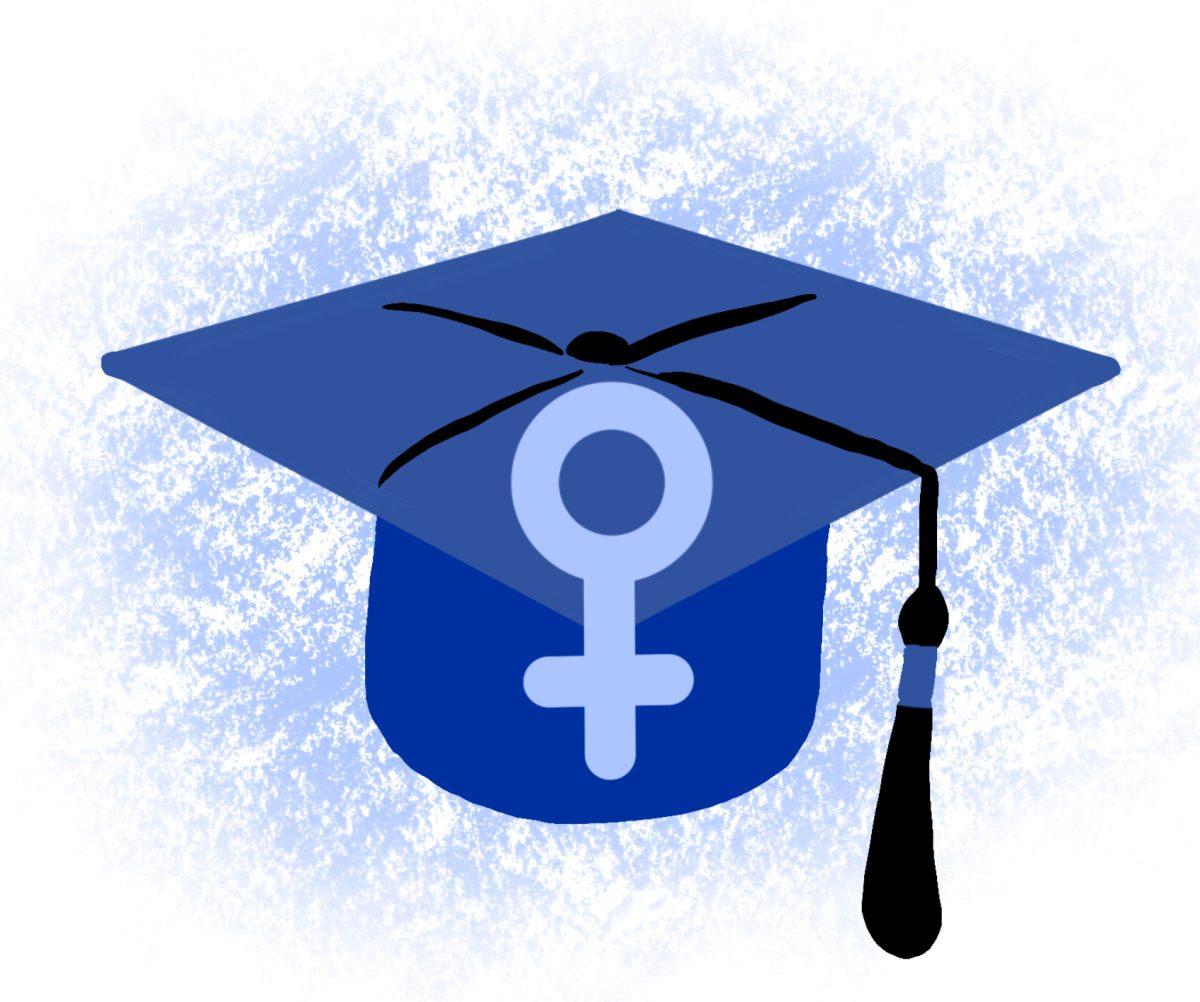The women of Drake University outnumber the men on campus and have since before 1995. In 2019, 62 percent of incoming first-year students were women. More than half of Drake’s faculty are women. Many majors, classes and activities are dominated by female students. Although, women have not always been as welcome on campus as today.
Drake University first opened its doors in 1881 to both women and men. In the late 19th century many colleges began allowing women to attend. Although Drake welcomed female students, it still had issues treating those women equitably and allowing them the same opportunities as the male students.
Originally, the only option available for women was a liberal arts path. The path was toned down from the male equivalent and did not earn a degree. Over the last century and more, opportunities for women at Drake grew and the women flourished.
Drake welcomed its first female faculty member in 1881, Mrs. W.P. Macy as an Art Faculty member.
Pictured above is Drake’s first faculty, including Mrs. W.P. Macy.
In 1904, Drake created its first women’s intramural basketball team. They played in the cleared Old Main Chapel, before a women’s gym was opened a few years later.
Mary Carpenter, daughter of George Carpenter, Drake’s first chancellor, attended Drake in 1881. She served as the school’s librarian from 1897 to 1905. She later became the Dean of Women in 1908, serving until she married. Following the death of her husband, Carpenter returned to Drake in 1918, where she again served as the Dean of Women until 1931. Later, the Carpenter residence hall was named after her.
A photo of Drake University’s 1936 glee club.
Drake University students in Sheslow Auditorium, 1942.
In 1961 Drake University made another step forward toward equity for female students, offering the first female races at the Drake Relays. Olympian Wilma Rudolph was the first woman to win a medal.
A poster for the Drake Community Women’s Center
In 1971 the Drake Women’s center opened. A few years later it found itself in a controversy.
On a fall night in 1976, the Drake Women’s Center held a discussion on the topic of lesbianism. Male reporters from the campus publication the Times-Delphic attempted to enter the Women’s Center but were denied. Soon after, there was an editorial published in the Times-Delphic calling the denial of entry sexist.
Following the editorial’s publication, an unnamed Drake Student who identified as a lesbian, wrote a letter to the editor stating the decision to not allow entry to the male reporters was not out of sexism, but out of the need for a safe space on Drake’s campus for both straight and queer women to have discussions on sexuality, a taboo topic in 1976.
Times have changed for Drake, but since the beginning, women have fought. They have fought for education, for a safe space, for more. Women at Drake are still making strides today. In 2019, Peggy Fisher became the first woman chair of the Drake Board of Trustees.
In the last 130 years, women have and will continue to persist, but there are still struggles for women at Drake.
“I definitely think there’s a gap between how women and men are treated especially in the athletics at Drake,” said Emily Godsey, a first-year News major at Drake. “I can tell I’m not taken as seriously as others because I’m the sports editor and I’m a girl. I just feel like I’m constantly either being treated unfairly by people in regards to sports or being treated like nothing more than a body.”
Sports aren’t the only area in which female students often feel excluded.
“Sometimes I’ll say something in class and it’s like my ideas are irrelevant,” said Alexa Johnson, a sophomore Healthcare Administration major. “I feel worried about being judged, or feel self-conscious.”
While many strides have been made in the name of equity towards women, female students still face struggles on campus. The community of Drake University needs to remember how far it has come, but be aware of the progress yet to be made.







